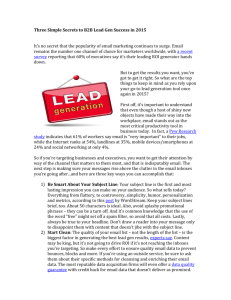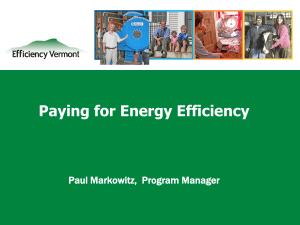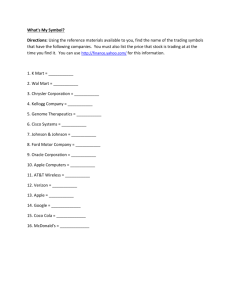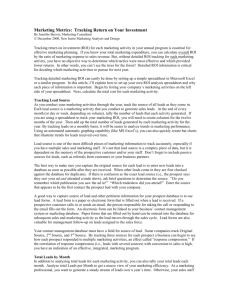Practice Set 2
advertisement
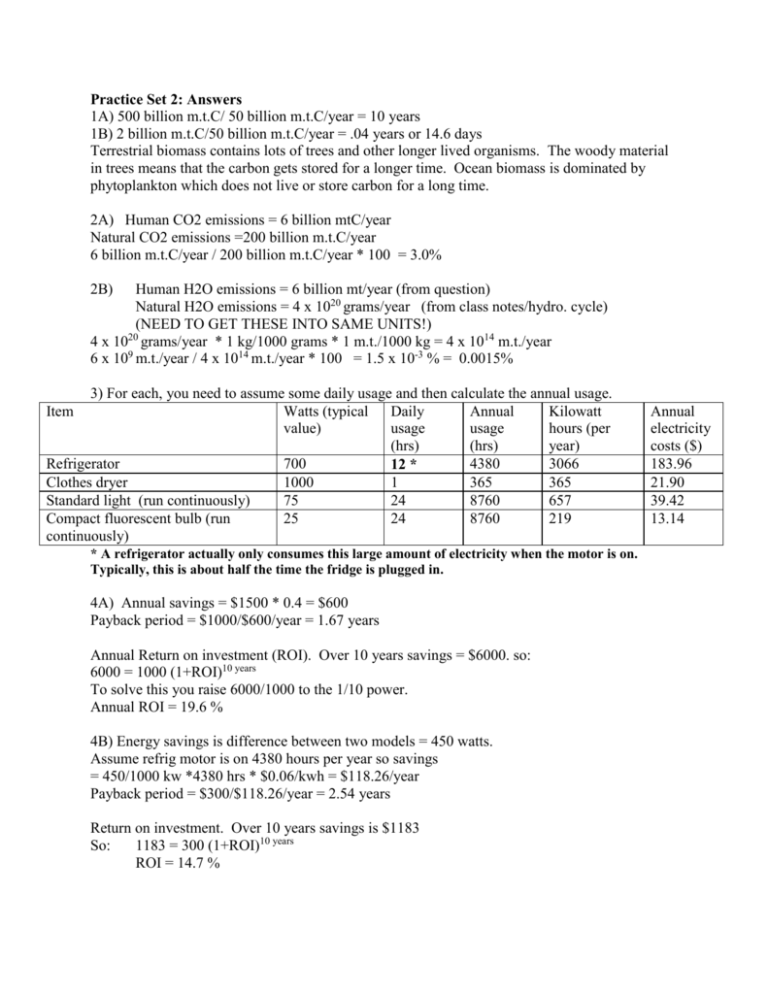
Practice Set 2: Answers 1A) 500 billion m.t.C/ 50 billion m.t.C/year = 10 years 1B) 2 billion m.t.C/50 billion m.t.C/year = .04 years or 14.6 days Terrestrial biomass contains lots of trees and other longer lived organisms. The woody material in trees means that the carbon gets stored for a longer time. Ocean biomass is dominated by phytoplankton which does not live or store carbon for a long time. 2A) Human CO2 emissions = 6 billion mtC/year Natural CO2 emissions =200 billion m.t.C/year 6 billion m.t.C/year / 200 billion m.t.C/year * 100 = 3.0% 2B) Human H2O emissions = 6 billion mt/year (from question) Natural H2O emissions = 4 x 1020 grams/year (from class notes/hydro. cycle) (NEED TO GET THESE INTO SAME UNITS!) 20 4 x 10 grams/year * 1 kg/1000 grams * 1 m.t./1000 kg = 4 x 1014 m.t./year 6 x 109 m.t./year / 4 x 1014 m.t./year * 100 = 1.5 x 10-3 % = 0.0015% 3) For each, you need to assume some daily usage and then calculate the annual usage. Watts (typical Daily Annual Kilowatt value) usage usage hours (per (hrs) (hrs) year) Refrigerator 700 4380 3066 12 * Clothes dryer 1000 1 365 365 Standard light (run continuously) 75 24 8760 657 Compact fluorescent bulb (run 25 24 8760 219 continuously) Item * A refrigerator actually only consumes this large amount of electricity when the motor is on. Typically, this is about half the time the fridge is plugged in. 4A) Annual savings = $1500 * 0.4 = $600 Payback period = $1000/$600/year = 1.67 years Annual Return on investment (ROI). Over 10 years savings = $6000. so: 6000 = 1000 (1+ROI)10 years To solve this you raise 6000/1000 to the 1/10 power. Annual ROI = 19.6 % 4B) Energy savings is difference between two models = 450 watts. Assume refrig motor is on 4380 hours per year so savings = 450/1000 kw *4380 hrs * $0.06/kwh = $118.26/year Payback period = $300/$118.26/year = 2.54 years Return on investment. Over 10 years savings is $1183 So: 1183 = 300 (1+ROI)10 years ROI = 14.7 % Annual electricity costs ($) 183.96 21.90 39.42 13.14

